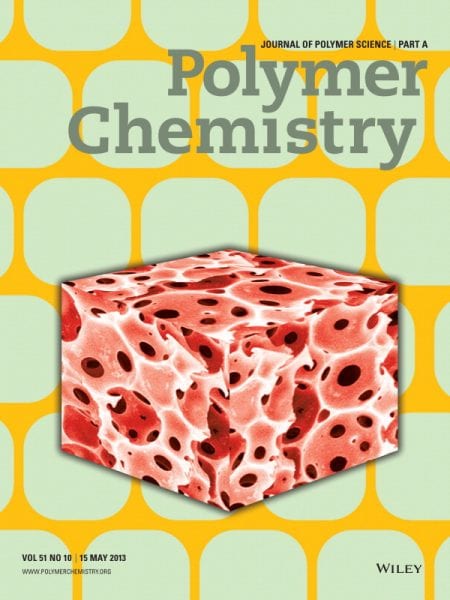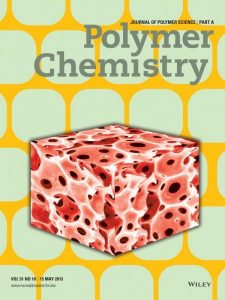In Volume 51, Issue 10 of the Journal of Polymer Science Part A: Polymer Chemistry, we are spotlighting three noteworthy articles: “Synthesis and Characterization of Novel Brush Copolymers with Biodegradable Polyphosphoester Side Chains for Gene Delivery,” “Diels-Alder Click Reaction for the Preparation of Polycarbonate Block Copolymers,” and “Mixed Substituent Poly[(vinyloxy)cyclotriphosphazenes].”
Most nucleic acid molecules (DNA, RNA, etc.) are fragile to enzymatic degradation and therefore require appropriate carriers that can deliver DNA into various kinds of cells enhancing bioavailability and therapeutic efficacy. In addition, coating the vector with nonionic hydrophilic polymers such as polyphosphoester (PPE) can reduce the cytotoxicity and improve stability before cellular uptake. Peihong Ni and colleagues synthesized brush copolymers with biodegradable PPE side chains via a combination of SET-LRP and ROP techniques. These brush copolymers showed low toxicity and favorable transfection efficiency in vitro proving them promising candidates for nonviral polymeric gene vectors.
Aliphatic polycarbonates have very low toxicity, biocompatibility, and biodegradability making them useful for applications such as surgical sutures, bone fixation, and controlled drug delivery. The introduction of functional pendant groups to cyclic carbonate monomers allows precise control over the physical, chemical, and biological properties of the resulting polycarbonate. Umit Tunca and collaborators describe the synthesis of well-defined polycarbonate-based block copolymers using the Diels-Alder click reaction. Diels-Alder doesn’t use any toxic copper catalyst making it more valuable for the preparation of biocompatible polycarbonate.
Inorganic rings can be used as substituents on an organic polymer backbone. Ring opening polymerization of cyclosiloxanes and cyclophosphazenes is the predominant route to polysiloxanes polyphosphazenes while thermal depolymerization often results in reformation of inorganic rings. Christopher Allen and Kenneth Carter report the synthesis of poly(vinyloxycyclotriphosphazenes) which provide hybrid organic-inorganic polymers with a high inorganic content and a potential broader range of thermal stability. A significant reduction in molecular weight compared to the parent polymer was observed and attributed to increased chain transfer.


















